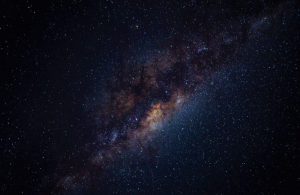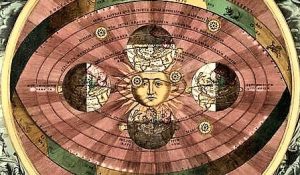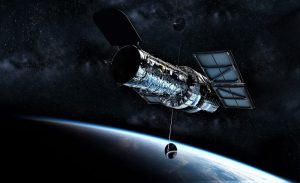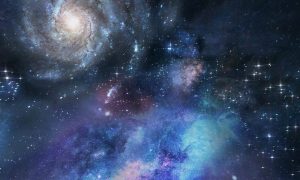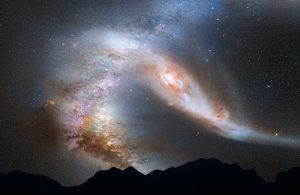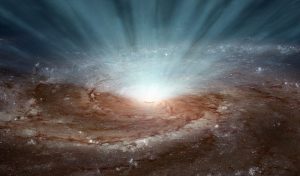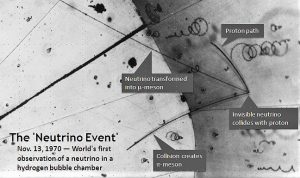Dark energy
In the early 1990s, one thing was certain about universe expansion and that was that it could have enough energy density to stop its expansion and recovery, it might have so little energy density that it would never stop expanding, but gravity would surely delay expansion over time. Our universe is full of matter and the force of gravity attraction is responsible for attracting all this matter. In 1998, observations with the Hubble Space Telescope (HST) observing supernovae over long distances showed that long ago, the universe was actually expanding more slowly than it does today. So, the universe's expansion has not been slowed down by gravity, as all scientists thought, but on the contrary it has been accelerating. No one expected this, no one knew how to explain it. But something was causing that. This force is known as dark energy, and it is a form of energy that is present in space exerting pressure that slows down the universe's expansion causing a repulsive gravitational force.
What is dark energy?
Dark energy is a force found in outer space responsible for exerting enormous pressure within it that causes the universe's expansion to slow, and at the same time, creating a highly repulsive gravitational force. It is the way some scientists explain why the universe seems to expand.
Backgrounds
The concept of energy arose from observations made to type 1 supernovae that suggested that the universe was in an acceleration process. The supernovae gave the main proof of the existence of dark energy.
Dark energy history
The cosmological constant was given by Albert Einstein, who was looking for a way to give solutions to the equation of the static universe using it to compensate for gravity. It was proved very soon that Einstein’s static universe was unstable because of the heterogeneity that led to the uncontrolled expansion of the universe. The equilibrium is unstable, so if the universe could expand, the energy that would be released would go into the void causing more expansion. Edwin Hubble’s observations showed that the universe was expanding and not static.
Alan Guth, in 1970, proposed the existence of a field with negative pressure that could lead to cosmic inflation. This inflation postulated that there were repulsive forces similar to dark energy resulting in the expansion of the universe. The term dark energy was given by Michel Turner, and the first proof of energy came from all the observations that had been made about a supernova expansion, a theory confirmed by Saul Perlmutter.
Dark energy nature
The nature of this type of energy is still under investigation and debate by scientists. To date, it is known that energy is homogeneous, it is not a dense energy, but in reality, the interaction it has with fundamental forces is still unknown, only the relationship it has with gravity is known. It is very difficult to carry out an experiment because its density weighs only 10-29 g/cm³.
It is also known that dark energy has an important influence on the universe because it represents 70% of all the energy that exists and occupies a uniform space in interstellar space. It is also important to mention that the two main models are the quintessence and the cosmological constant.
Dark energy theories
- Dark energy is a property of space and this theory comes from Einstein’s Gravity Theory, which says that empty space can only have its own energy. He thought that space came from nothing and that the more it formed the more energy it produced, which could explain the rapid expansion of the observable universe.
- The Theory of Everything that explains the way all objects in the universe behave.
- The dark energy creates a new fundamental force by showing that there is an undiscovered force that acts on very large scales and will only be observable when the universe reaches a giant size.
- Time dilation, which is a phenomenon that happens when objects can move at the same speed as light and experience a slowdown in time. This would mean that time perception is faster in the past.
- Another theory tells us of the existence of a new exotic particle because scientists believe that the energy that exists in a particular field should be transmitted by a particle of force rather than the field itself.
- The F(R) theories that are models of the current curve of the universe, which is represented by the letter R. Scientists showed that, with a specific value of R, the universe is created so that dark energy would not be necessary to explain the expansion of the universe.
Relationship with universe destiny
The future of our universe will depend on the exact nature of dark energy. If this energy were a cosmological constant, the future would be similar to that of a flat-shaped universe because, according to some models of quintessence or phantom energy, the density of dark energy increases as time goes by, causing an exponential acceleration. This acceleration could become so fast that it could overcome the forces of nuclear attraction and could then destroy the universe, known as the Great Tear.
How to cite this article?
Briceño V., Gabriela. (2019). Dark energy. Recovered on 4 January, 2025, de Euston96: https://www.euston96.com/en/dark-energy/
